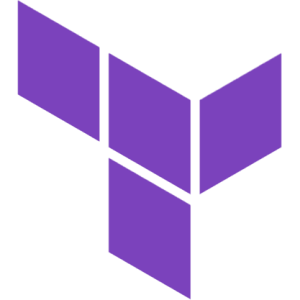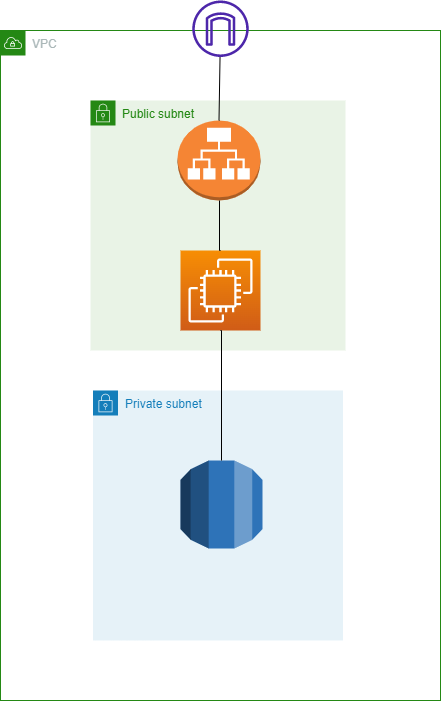[Must-see for beginners] ChatGPT wrote Terraform code

table of contents
This is Ken, who has caught a cold for the first time in five years, and is responding quite well.
It's been about a year since I started using AWS services.
I thought it would be nice to start up and configure EC2 instances etc. on the console, but I think it is gradually becoming more common to implement infrastructure in code. Following this trend, I myself decided to try launching AWS resources with Terraform. However, everything takes time at first.
So, this time I created Terraform code together with ChatGPT and modified it.
Environmental information
WSL2
windows 11
Terraform v1.2.5
The AWS configuration we built this time
Prompt words I tried
The prompt input I tried this time is extremely simple.
I would like to build on AWS as shown below.
VPC 1
Route table 1
Public subnet 2
Private subnet 2
EC2 1
ALB 1
RDS 1
If you enter a prompt like this, ChatGPT will write various things.
If this continues, there may not be enough Target Groups or RDS Subnet Groups, so we will ask you to create additional locations.
If you want to continue basic conversation,
Add Target Group to the above code
It seems that if you add a keyword such as ``above'', the name will be inherited.
If they don't take over, they will write the code using that name even if they don't want to. Also, when I'm curious, I use Google search to find out if it's something like this.
tf file written with help from ChatGPT
This time, in order to make it easier to understand, I have combined the files into one file and created it without using variables as much as possible. I think it is also possible to create a tf file using variables etc. using ChatGPT, so if you would like to create it in that format, please give it a try.
# Configure provider provider "aws" { region = "ap-northeast-1" } # Create VPC resource "aws_vpc" "main" { cidr_block = "10.0.0.0/16" } # Create internet gateway resource "aws_internet_gateway" "gw" { vpc_id = aws_vpc.main.id } # Create public subnet 1 resource "aws_subnet" "public_subnet1" { vpc_id = aws_vpc.main.id cidr_block = "10.0.1.0/24" availability_zone = "ap-northeast-1a " map_public_ip_on_launch = true } # Create public subnet 2 resource "aws_subnet" "public_subnet2" { vpc_id = aws_vpc.main.id cidr_block = "10.0.2.0/24" availability_zone = "ap-northeast-1c" map_public_ip_on_launch = true } # Private Create subnet 1 resource "aws_subnet" "private_subnet1" { vpc_id = aws_vpc.main.id cidr_block = "10.0.3.0/24" availability_zone = "ap-northeast-1a" } # Create private subnet 2 resource "aws_subnet" "private_subnet2 " { vpc_id = aws_vpc.main.id cidr_block = "10.0.4.0/24" availability_zone = "ap-northeast-1c" } # Create route table resource "aws_route_table" "public_route_table" { vpc_id = aws_vpc.main.id route { cidr_block = "0.0.0.0/0" gateway_id = aws_internet_gateway.gw.id } } # Associate a route table with a public subnet resource "aws_route_table_association" "public_subnet1_association" { subnet_id = aws_subnet.public_subnet1.id route_table_id = aws_route_table.public_route_table.id } resource "aws_route_table_association" "public_subnet2_association" { subnet_id = aws_subnet.public_subnet2.id route_table_id = aws_route_table.public_route_table.id } # Create ALB resource "aws_lb" "alb" { name = "test-alb" subnets = [aws_subnet.public_subnet1.id, aws_subnet.public_subnet2.id] internal = false load_balancer_type = "application" } # Create EC2 resource "aws_instance" "ec2" { ami = "ami-03dceaabddff8067e" instance_type = "t2.micro" subnet_id = aws_subnet.public_subnet1.id key_name = "hogehoge" } # Create a target group resource "aws_lb_target_group" "target_group" { name = "my-target-group" port = 80 protocol = "HTTP" vpc_id = aws_vpc.main.id target_type = "instance" } # ALB and Target group association resource "aws_lb_listener" "listener" { load_balancer_arn = aws_lb.alb.arn port = 80 protocol = "HTTP" default_action { type = "forward" target_group_arn = aws_lb_target_group.target_group.arn } } # Register instance to target group resource "aws_lb_target_group_attachment" "target_group_attachment" { target_group_arn = aws_lb_target_group.target_group.arn target_id = aws_instance.ec2.id port = 80 } # Create RDS resource "aws_db_instance" "rds" { engine = "mysql" instance_class = "db.t2. micro" allocated_storage = 10 engine_version = "5.7" identifier = "my-rds-instance" username = "admin" password = "hogehoge" skip_final_snapshot = true publicly_accessible = false vpc_security_group_ids = [aws_security_group.rds_security_group.id] db_subnet_group_name = aws_db_subnet_group.db_subnet_group. name } # Create a security group to allow access to RDS resource "aws_security_group" "rds_security_group" { vpc_id = aws_vpc.main.id ingress { from_port = 3306 to_port = 3306 protocol = "tcp" cidr_blocks = ["0.0.0.0/ 0"] } } # Create a DB subnet group resource "aws_db_subnet_group" "db_subnet_group" { name = "my-db-subnet-group" description = "My DB Subnet Group" subnet_ids = [aws_subnet.private_subnet1.id, aws_subnet.private_subnet2 .id] }
summary
Beginners have the disadvantage of not knowing which code is correct, but I think there is a way to try out numbers first and gradually understand that it is easier to write or see. That's what I thought about today.
Also, the code generated by ChatGPT is not perfect, so in this case, I think an error will occur when you run terraform apply. When this happens, you will definitely need to make corrections yourself.
However, without thinking that it's a hassle, as you investigate what's wrong, you'll gradually realize things like, ``I see, this is the meaning of the error!Then, this is the wrong way to write it.'' I think it is.
So, don't give up even if you get an error, try again and again and enjoy the rich life of an engineer.

 6
6








